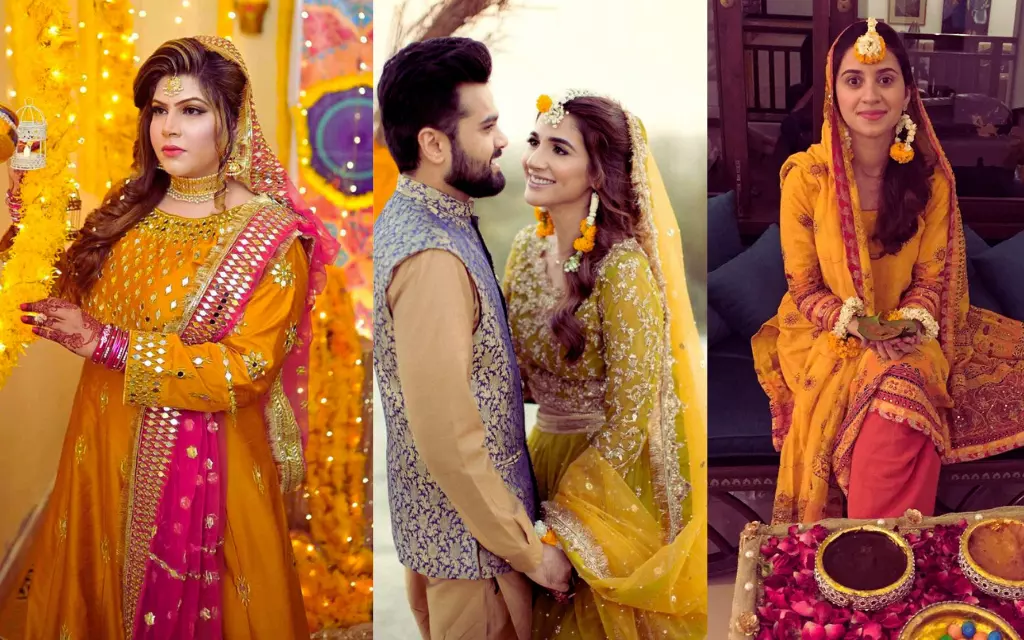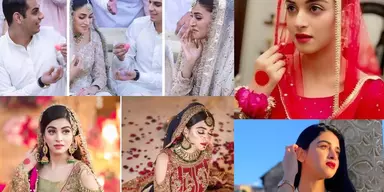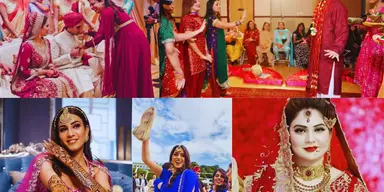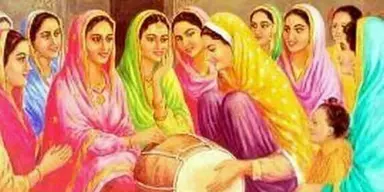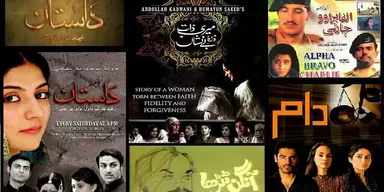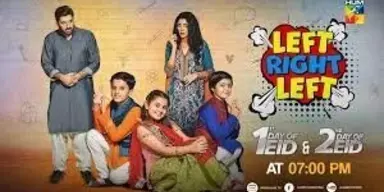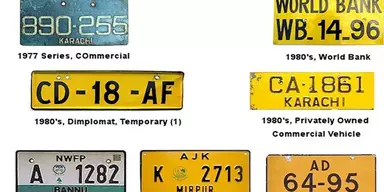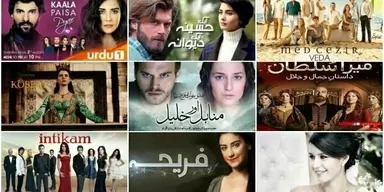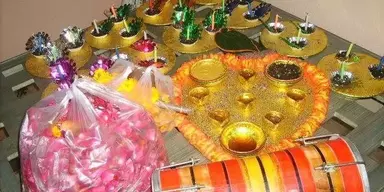Mayoun, also called Maiyun, Haldi, or Ubtan, holds deep cultural meaning and is an integral part of Punjabi weddings in India and Pakistan. This pre-wedding ceremony takes place one day before the wedding at the couple’s parental homes, and it encompasses various rites and traditions that add to the festive atmosphere. Understanding the Mayoun meaning allows us to appreciate its significance in these cultural celebrations.
The pre-wedding ceremony of Mayoun is celebrated with tremendous cultural significance in many parts of the globe. Discover the origins of Mayoun and its importance in cultural festivals as this essay digs into the complex traditions and rituals surrounding this mysteriousword. This in-depth analysis of this revered cultural practice focuses on its beginnings, rituals, and symbols to better comprehend all three.
Traditionally held throughout South Asia, the Middle East, and other places with rich cultural traditions, the Mayoun ceremony is also known as the Mehndior Mehendi ceremony. The rich cultural diversity in this pre-wedding rite is reflected in the origins and meanings of the name “Mayoun” itself.
By delving into the Mayoun meaning, one might discover a rich tapestry of traditions and practices that celebrate the cultural history and strengthen ties between families and communities. Mayoun has been around since ancient times when it was first used to honor the union of two families in matrimony. The tradition has changed and adapted through time, resulting in new and interesting variants in each culture. Mayoun captures the spirit of cultural variety, from the bright and joyful celebrations in India and Pakistan to the henna-centered parties in Arab nations.
Symbolism and meaning abound in the Mayoun rites and customs. Intricate henna patterns are chosen, the bride-to-be is dressed in traditional clothing and adorned with traditional jewelry, and performances of traditional music and dance are organized in the days leading up to the Mayoun ceremony. Henna has profound symbolic value, including good luck, protection from bad spirits, and a boost to your appearance.
The cultural relevance of Mayoun extends well beyond its visual qualities. It’s a joyous occasion honoring women by focusing on the future bride’s exciting new beginnings. By bringing together the bride-to-be’s family and friends, mayoun rituals serve an important role in strengthening bonds between families and communities. Mayoun also works to perpetuate cultural practices by ensuring that they are handed on from one generation to the next.
Recent decades have brought about changes in Mayoun that combine modern influences with more established norms and practices. Mayoun festivities now have a broader appeal and deeper meaning due to these overlapping cultural traditions.
Understanding the variety and diversity of cultural festivals is enhanced by delving deeply into the meaning and importance of Mayoun. This article aims to educate readers on the history, customs, and cultural importance of Mayoun in the hopes of increasing mutual respect and understanding across cultures.
What is Mayon? What are the Origins of Mayoun?
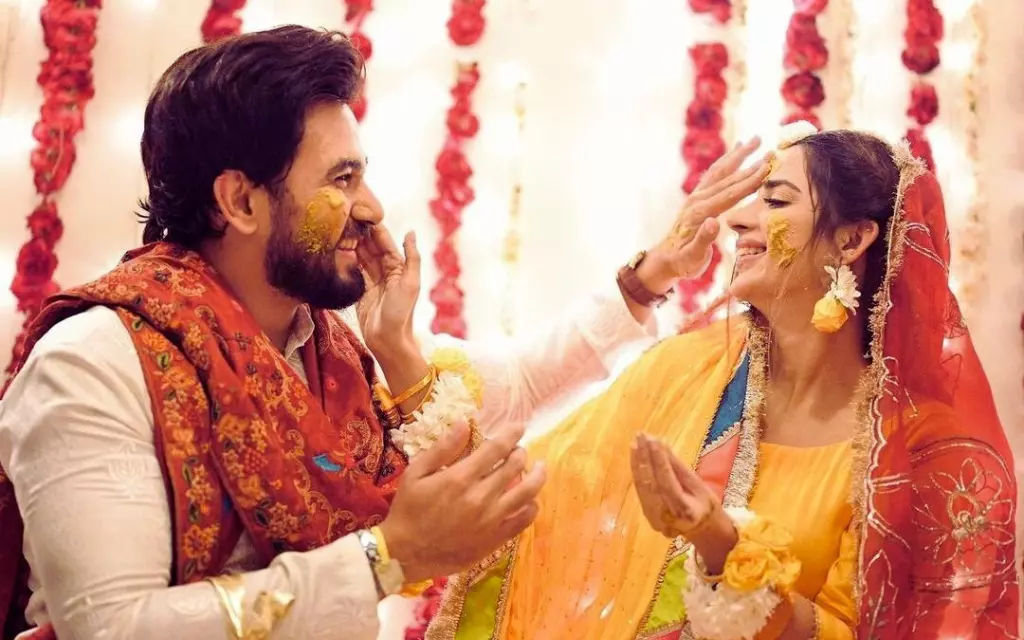
What is Mayoun? In India and Pakistan, the Punjabi community performs a pre-wedding rite known as Mayoun (also spelled Maiyun, Haldi, and Ubtan). But what exactly is involved in Mayoun? Well, it’s a party that the couple throws at their parents’ houses the night before the wedding. Among the many rituals and customs practiced at this time is the application of a paste called “Batna” or “Haldi,” which is derived from turmeric, oil, and other natural components; another is the Jago ceremony, which includes the burning of clay pots and lively dancing. Mayoun has significant cultural significance as a time for renewal, renewal of the home, and family unity.
Mayoun is an ancient ritual that began as a symbolic celebration of a couple’s decision to join their families together in marriage. Mayoun has grown deeply ingrained in the culture of many places, including South Asia and the Middle East, although its precise origins are obscure. This lively pre-wedding ritual’s cultural importance and symbolism may be better understood after we learn the Mayoun meaning.
Mayoun has a long and storied history in South Asian countries like India and Pakistan. It is said to have evolved from the practice of “haldi,” in which the bride and groom are painted with a paste of turmeric, oil, and other natural components. This ritual was believed to help the bride and groom feel more beautiful and clean on their wedding day. The actual ceremony eventually grew into a broader festival called Mayoun or Mehndi, when friends and family would get together to have a good time.
Mayoun is also known as Mehndi or Mehendi in Arabic-speaking nations, reflecting the role of henna in the pre-wedding festivities. The henna plant’sleaves are used to make a natural dye that has been used for ages to decorate the skin with elaborate designs. Henna tattooing is often thought to have spread from the Middle East to the rest of the globe.
Intricate henna patterns are a means of creative expression for the bride and a symbolic emblem of her new life as a wife. Henna is used in Mayoun celebrations because of its symbolic and cultural significance. Henna symbolizes blessings, good luck, and protection from bad spirits.
Mayoun has changed and altered over the years in response to local and global influences. It is often celebrated with pomp and circumstance throughout South Asia, with a riot of color, energetic music, traditional dances, and ornate decorations. It’s a chance for everyone to get together and celebrate, so there’s a joyful, celebratory vibe in the air.
Mayoun is celebrated across Arab nations, and henna plays a significant part in these celebrations. The singing of old songs defines the event, the dancing of vibrant dances, and the exchange of tasty treats. The application of henna is a highlight, with professionals designing elaborate patterns on the bride’s and other women’s hands and feet.
The importance of Mayoun is not limited to its past and present cultural significance. It’s a way to honor the bride-to-be and her transition into matrimony while celebrating her femininity. The bride’s loved ones use this opportunity to wish her well as she begins a new chapter by throwing a party in her honor.
Mayoun also has a significant impact on maintaining historical records. Mayoun can guarantee the continuity of cultural values, beliefs, and practices because of the rituals, traditions, and customs it upholds. It symbolizes the enduring love and appreciation for our shared cultural history.
Mayoun has recently seen the effects of globalization and modernization. Mayoun festivities have grown increasingly multifaceted and eclectic due to globalization and greater cultural contact. This synthesis of traditional and modern elements has given Mayoun rituals additional depth, which is indicative of the dynamic character of cultural practices in the modern world.
Rituals and Traditions
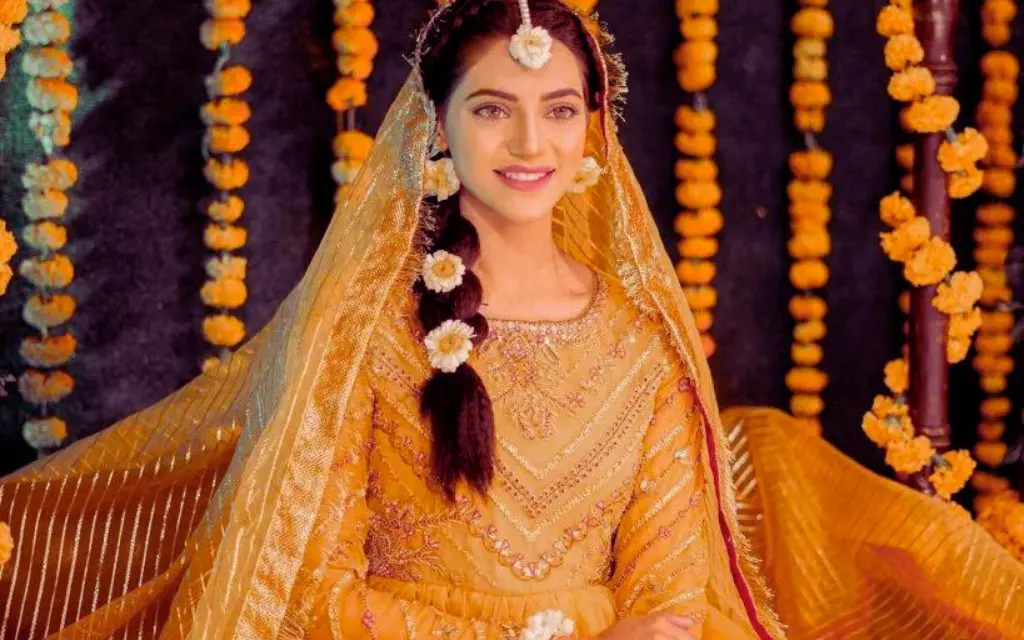
Several customs and rituals associated with Mayoun give the holiday more depth and color. The importance and celebratory mood of the Mayoun festival are enhanced by the many traditions surrounding it.
Preparations and Pre-Mayoun Activities
Venue and Decorations: Preparations and Mayoun-related activities take place in the days before the ceremony to make it a success and leave an impression on guests. Members of the family and close friends work together to plan the event.
First, a location is chosen, and then it is decked up with bright textiles, garlands of flowers, and decorative lights. The setting was designed with a celebratory mood in mind.
Henna Designs: Mayoun is not complete without the elaborate henna decorations applied to the body. Professional henna artists are hired to decorate the hands and feet of the bride and any other female guests. Symbols and themes from the past are typically included in the designs.
Music and Dance: Mayoun festivities aren’t complete without the music and dancing that are integral to the culture. Traditional songs are sung and performed enthusiastically and are typically accompanied by traditional musical instruments. Guests celebrate the forthcoming nuptials with exuberant dances conveying joy and anticipation.
Mayoun Ceremony
The highlight of the festivities is the Mayoun ceremony. The future bride’s loved ones and friends get together to celebrate her and wish her well. Traditional rites performed at the ceremony are as follows:
Application of Henna: Henna is applied to the hands and feet of the bride-to-be and other women in the bridal party. The elaborate patterns stand for aesthetic appeal, good fortune, and warding off bad spirits. Henna application may be a moment of celebratory sisterhood among female friends.
Traditional clothes: The bride wears traditional clothes, which might differ by culture and by the bride herself. Embroidered garments are a common component of this ensemble, as are regionally inspired jewelry and adornments.
Blessings and Wishes: Relatives and friends take turns wishing the bride a wonderful marriage and sharing their best wishes for her future. A caring and supportive atmosphere is fostered by exchanging words of wisdom and encouragement.
Feasting and Celebration: Mayoun festivities are celebrated with a lavish meal that includes many regional specialties. The traditional drinks and tasty nibbles will surely put everyone in a festive mood.
Symbolism and Blessings
The rite of Mayoun is rife with symbolism and bestows great favors on the bride-to-be. The rituals and components have significant meanings:
Henna is a kind of body art that has come to represent femininity, fertility, and good fortune. It’s a tradition meant to safeguard and bless the bride before she ties the knot.
Traditional Attire: The cultural identity and background of the bride are represented through her traditional clothing. It’s a way to show the world how much your family values its heritage and traditions.
Blessings: The Mayoun ceremony’s blessings for the bride-to-be are very significant. They are a means for her loved ones to communicate their encouragement, affection, and hopes for her future.
The customs and rituals of the Mayoun people are sure to leave an impression on anybody who participates. They allow the bride-to-be’s loved ones and friends to gather in preparation for the wedding and celebrate the beginning of a new chapter in her life. All of the love, joy, and togetherness that permeates Mayoun festivities is reflected in these traditions, which help to keep them alive for future generations.
Importance in Culture
Mayoun meaning incorporates a symbolic cleansing and blessing of the bride and groom before the wedding. Mayoun represents important cultural values and customs for the communities who celebrate it. This article delves into the cultural importance of Mayoun from three angles: the empowerment of women, the strengthening of family and community ties, and the protection of historical and cultural traditions.
Honoring the Feminine
Mayoun is a beautiful celebration of women recognizing and appreciating the bride-to-be’s upcoming marriage. It represents a young woman’s transition into the position of wife, signifying that she is ready to take on new obligations and tasks within her family and community. Mayoun serves as a forum for honoring the bride’s uniqueness, attractiveness, and development as an individual, as well as the community’s women’s experiences and insights.
Integration into the Neighbourhood
Mayoun serves as an impetus for strengthening ties within households and across neighborhoods. Family, friends, and neighbors from all around congregate to celebrate the event, strengthening bonds and fostering camaraderie. The traditions, preparations, and celebrations of Mayoun provide a loving and accepting atmosphere for the bride-to-be by bringing the whole family closer together. Family members of all ages can join together for the wedding, with the older generation providing wisdom and blessings to the young bride and the younger generation helping to plan the event and injecting energy into the celebration.
Safeguarding Our Cultural Treasures
To ensure that traditions are passed down from one generation to the next, Mayoun is vital. Mayoun and its accompanying rites, traditions, and practices serve as a vital connection to one’s cultural identity and family history. Communities maintain pride and belonging by participating in and passing on these traditions. Mayoun provides a venue for the transmission of cultural norms, myths, and rituals, fostering in the next generation an appreciation for its past and a sense of belonging to a community.
Mayon also helps strengthen a community’s cohesive cultural identity. It’s a chance to celebrate the region’s rich cultural history by showcasing its traditional arts, crafts, music, and dance. Mayoun’s cultural identity is preserved, distinctive practices are perpetuated, and cultural continuity is promoted via the widespread usage of traditional dress, song, and ornamentation.
Mayoun’s value as a tool for fostering mutual acceptance across cultural boundaries is heightened in today’s more interconnected and multicultural globe. It’s a portal into other cultures, letting people from all walks of life learn about the beliefs and customs of Mayoun tribes.
Modern Adaptations
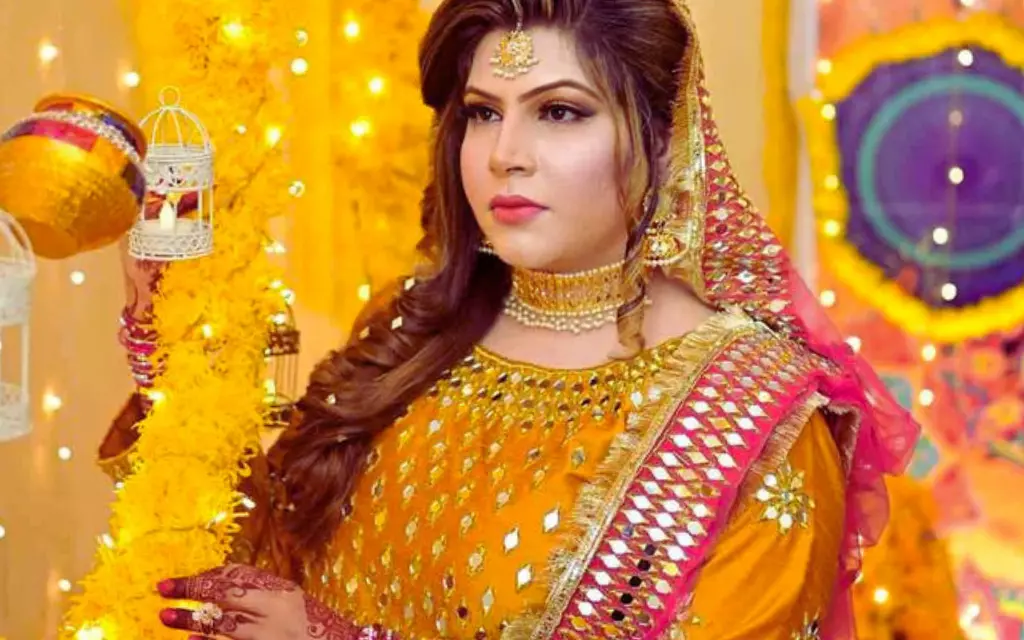
Several recent transformations in Mayoun have included contemporary aspects of the ancient rituals. These modifications are in response to the changing tastes and lifestyles of contemporary people and reflect the dynamic character of cultural practices. In this part, we’ll examine how several Mayoun rituals have evolved in recent decades.
Mixing of Cultural Traditions
As the world becomes smaller and more linked, Mayoun festivities have grown more inclusive. The Mayoun rituals are one-of-a-kind and varied because they include elements from many different cultures and areas. To better represent the multicultural society in which we live, a fusion of customs is created by combining elements such as music, dance, clothing, and decorations from other cultures. This mashup makes the festivities more exciting and fosters mutual appreciation and knowledge amongst people of different backgrounds.
Modern Henna Patterns
While interest in classic henna patterns remains high, newer variations have brought a more modern feel to the art form. Intricate patterns, from geometric designs to abstract motifs and even personalized symbols and messages, are increasingly included by henna artists. Because of this, each person who gets henna has a one-of-a-kind and customized experience.
Customization and free-form expression
The importance of the individual and their unique expression has grown in recent Mayoun rituals. It’s entirely up to the bride and her family to make the celebration unique and special for themselves. The décor, favors, and atmosphere may all be made more special by integrating the guests’ tastes and interests. The objective is to personalize every aspect of the Mayoun ceremony to represent the couple perfectly.
Combining Technologies
Many contemporary Mayoun celebrations also use technological advancements to further immerse participants in the ritual. For those who can’t be there in person, this may mean broadcasting the event live online, sending out digital invites, or posting photos and updates on social media. With the help of modern technology, friends and family members from all over the world may share in the celebration, no matter how distant they may be physically located.
Environmentally Sound Methods
Recent years have seen a rise in environmental concern, and the Mayoun festivities have not been immune to this trend. Eco-friendly changes include employing sustainable caterers and decorations made from biodegradable materials. These environmentally friendly options reflect the beliefs of people who want to make a big difference in the world while honoring their traditions and the planet.
Embracing change while maintaining the core values of their culture is made possible by incorporating contemporary innovations into Mayoun traditions. Mayoun has been updated to reflect the tastes and priorities of modern people, guaranteeing the religion’s continued significance. Mayoun ceremonies are always developing because they include new ideas, technology, and values, making each one special for the bride, groom, and their families.
Sources
- Myrvold, K. (2004). “Wedding ceremonies in Punjab.” Journal of Punjab Studies https://punjab.global.ucsb.edu/sites/default/files/sitefiles/journals/volume11/no2/5_myrvold.pdf
- Musaeva, S. I., & Akhmedova, K. K. (2017). “PRE-WEDDING CEREMONIES IN THE URAKHINSKY RURAL COMMUNITY IN THE 19th-EARLY 20th CENTURIES.” History, Archeology and Ethnography of the Caucasus https://caucasushistory.ru/2618-6772/article/view/11
- Da Vanzo, J., & Goldscheider, F. K. (1990). “Coming home again: Returns to the parental home of young adults.” Population Studies https://www.tandfonline.com/doi/abs/10.1080/0032472031000144576
- Naqvi, M. H. A., Jiang, Y., Naqvi, M. H., Miao, M., Liang, C., & Mehmood, S. (2018). “The effect of cultural heritage tourism on tourist word of mouth: The case of lok versa festival, Pakistan.” Sustainability https://www.mdpi.com/2071-1050/10/7/2391
- Stephenson, B. (2015). “Ritual and society” OxfordAcademy https://academic.oup.com/book/466/chapter-abstract/135244433?redirectedFrom=fulltext
- Dictionary (2023). “Mysterious” Dictionary.com https://www.dictionary.com/browse/mysterious
- White, C. & Copeland, B. (2023). “Attending Your First Mehndi Party? Here's What You Need to Know About This Pre-Wedding Event” MarthaStewart https://www.marthastewart.com/7892206/traditional-mehndi-party
- Malik, I. H. (2006). “Culture and customs of Pakistan.” Greenwood Publishing Group. https://books.google.com.pk/books?hl=en&lr=&id=GQTABKAGaVgC&oi=fnd&pg=PP11&dq=+cultural+history+of+pakistan&ots=AwIGSIetIa&sig=ZmslsTTkdQFMxBP9slPTGtq6r5Q&redir_esc=y#v=onepage&q=cultural%20history%20of%20pakistan&f=false
- Merriam (2023). “Matrimony” MerriamWebster https://www.merriam-webster.com/dictionary/matrimony
- Bristol-Rhys, J. (2007). “Weddings, marriage and money in the United Arab Emirates.” Anthropology of the Middle East https://www.berghahnjournals.com/view/journals/ame/2/1/ame020103.xml
- Andovski, D. (2021). “Celebrating a Mehndi Party: a traditional Indian pre-wedding ceremony” DaPhotoStudio https://www.google.com/url?esrc=s&q=&rct=j&sa=U&url=https://daphotostudio.com/blog/celebrating-a-mehndi-party-pre-wedding-celebrations/&ved=2ahUKEwiKpvft1f7-AhWLU6QEHUE5By0QFnoECAcQAg&usg=AOvVaw2jy_lrcJBq14Mti0lxapf2
- Merriam (2023). “bride-to-be” MerriamWebster https://www.merriam-webster.com/dictionary/bride-to-be
- PCRS (2017). “Pakistani Festivals” PCRS http://pcrs.com.pk/pakistani-festivals/
- RedWater (2022). “What is a Celebration of Marriage? Everything You Need to Know” RedWaterEvents https://www.google.com/url?esrc=s&q=&rct=j&sa=U&url=https://www.redwaterevents.com/blog/what-is-a-celebration-of-marriage-everything-you-need-to-know&ved=2ahUKEwiLiMSd1_7-AhXxdKQEHaEhCV0QFnoECAkQAg&usg=AOvVaw2Rzeivf37Z0PfWh2rNsomY
- Pechilis, K., & Raj, S. J. (2013). “South Asian religions: tradition and today.” Routledge https://scholar.google.com/scholar?hl=en&as_sdt=0%2C5&q=South+Asian+countries+weddings&btnG=
- Nasr, N. (2023). “What Countries Speak Arabic? (Full List of Arabic Countries)” TalkInArabic https://talkinarabic.com/arab-countries/
- BalconyGarden (2023). “Everything About Growing Henna Plant in Home & Garden” BalconyGardenWeb https://balconygardenweb.com/how-to-grow-henna-in-pots-growing-lawsonia-inermis/
- Alexeeva, N.N. (2023). “South Asia” Britannica https://www.britannica.com/place/South-Asia
- Burki, J.B. “The Arts of Pakistan” Britannica https://www.britannica.com/place/Pakistan/The-arts
- PIEE (2022). “What Is Globalization? And How Has the Global Economy Shaped the United States?” PIEE https://www.piie.com/microsites/globalization/what-is-globalization

